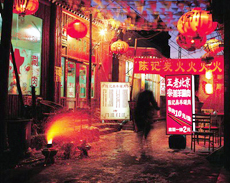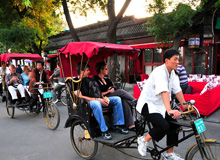What is Hutong
Beijing's hutongs, lanes or alleys formed by lines of siheyuan (a compound with houses around a courtyard) where old Beijing residents live, witness the vicissitude of the city.
Hutong's Origin
 The word "hutong" originates from the word "hottog" which means "well" in Mongolian. Villagers dig out a well and inhabited there. Hutong means a lane or alley, in fact the passage formed by lines of siheyuan (a compound with houses around a courtyard) where old Beijing residents live.
The word "hutong" originates from the word "hottog" which means "well" in Mongolian. Villagers dig out a well and inhabited there. Hutong means a lane or alley, in fact the passage formed by lines of siheyuan (a compound with houses around a courtyard) where old Beijing residents live.
Be care not to lost in it! It was recorded that in the Yuan a 36-meter-wide road was called a standard street, a 18-meter-wide one was a small street and a 9-meter-wide lane was named a hutong. In fact, Beijing's hutongs are inequable ranging from 40 centimeter to 10 meter in wide. The longest has more than 20 turns. Either in east-west or north-south, Beijing's hutongs varied as slant, half or " blind hutongs" cul-de-sacs. The gray-tiled houses and deep alleys crossing with each other in identical appearance like a maze, you will find it much fun to walk through but be care not to lost yourself.
Recommended Beijing Hutong Tours
Hutong, lanes or alleys, is formed by lines of Siheyuan (a compound with houses around a courtyard) standing side by side along a straight passage. The Hutongs have witnessed the vicissitude of Beijing. Choose your preferred way to explore the Hutong alleys - by rickshaw, by bike or on foot, to see the authetic real life happening in the alleys.


